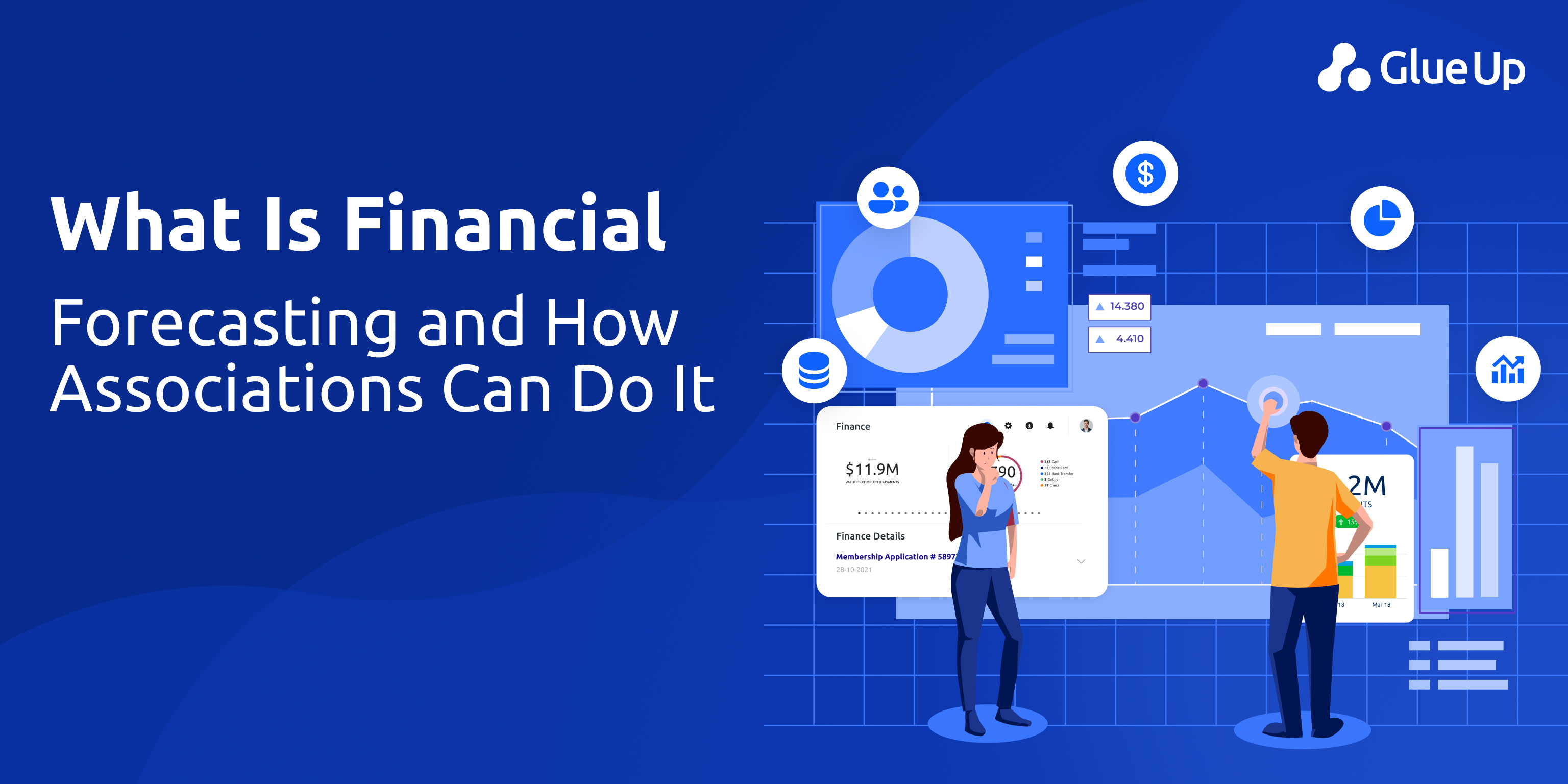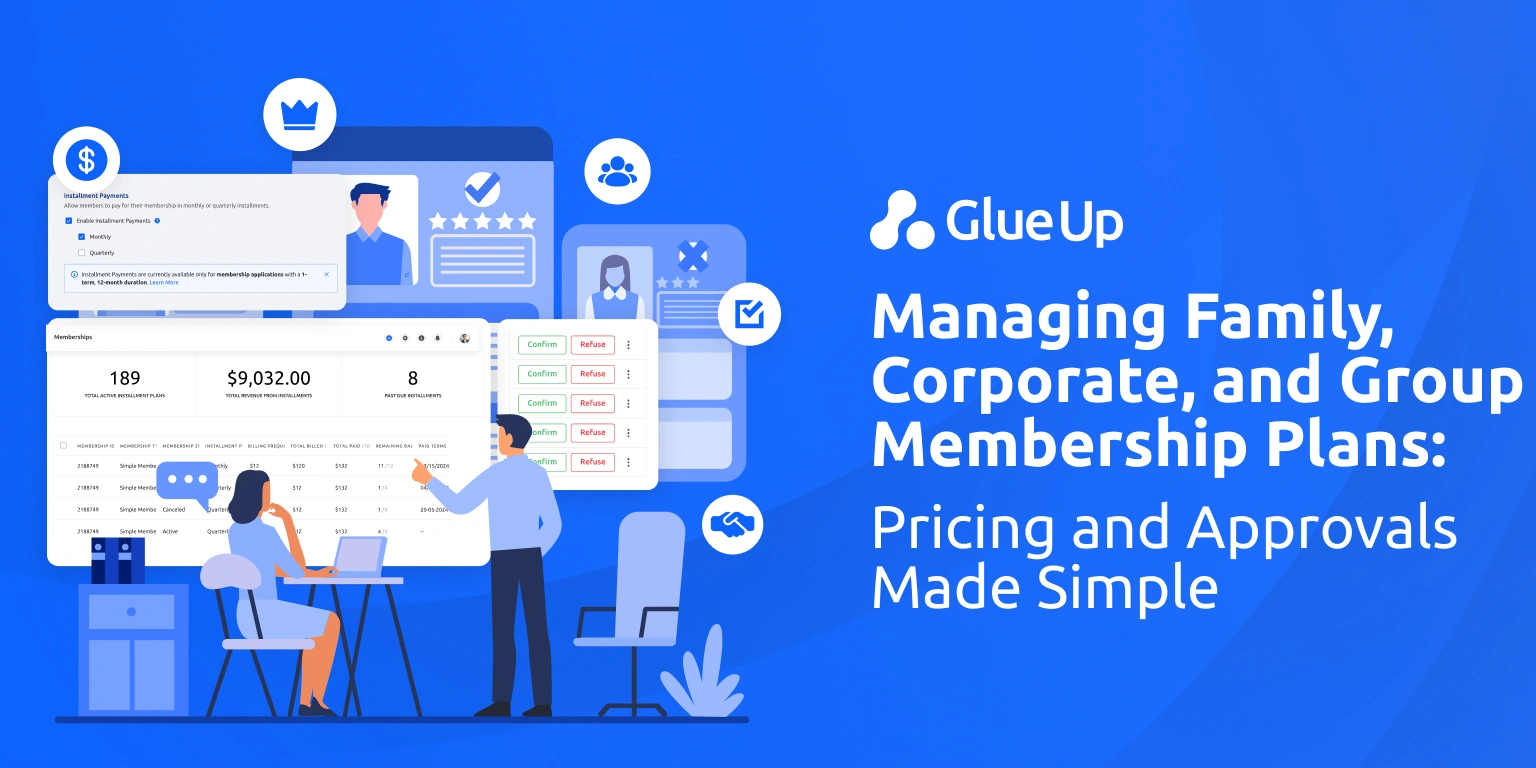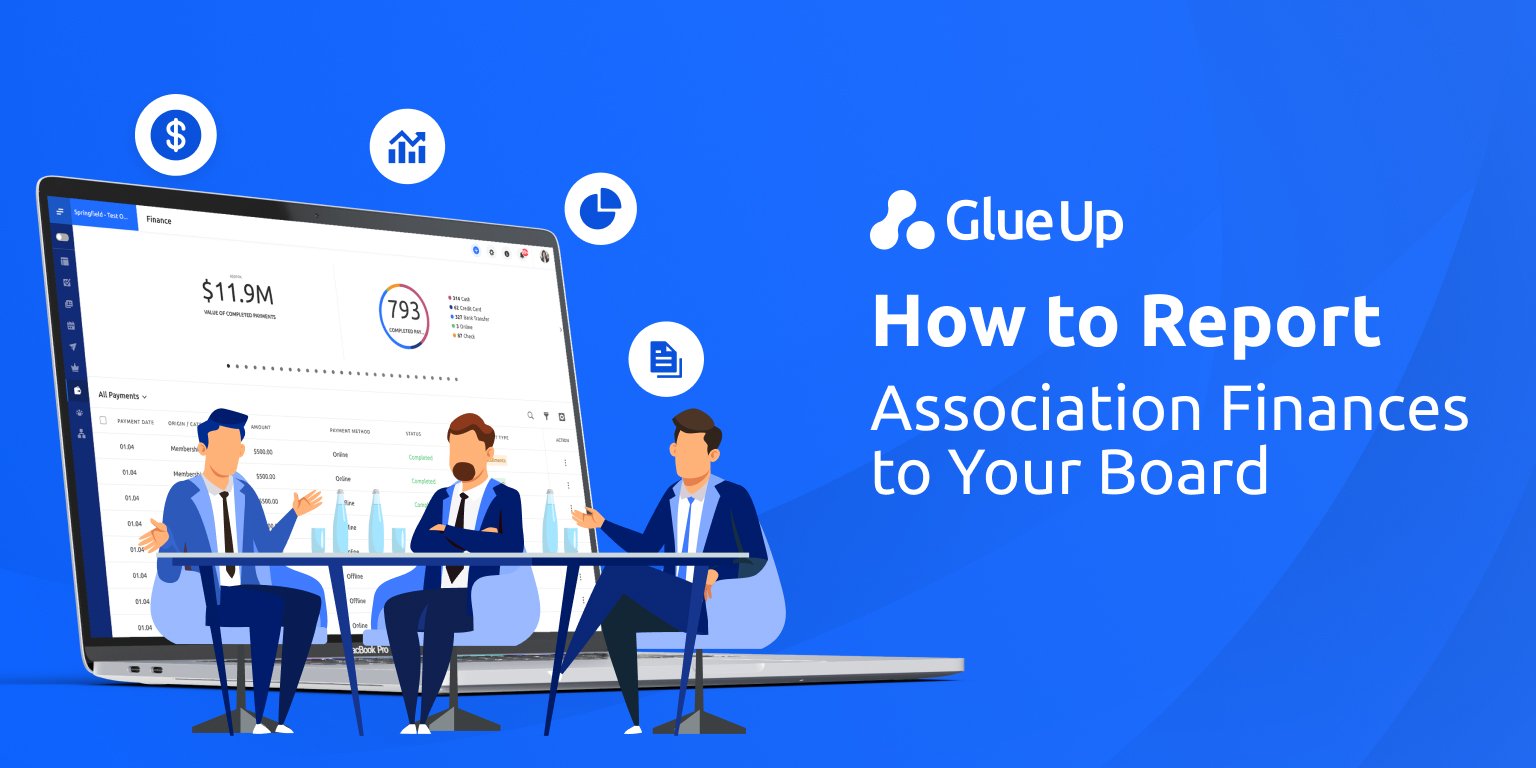
Your board wants certainty.
They want to know if the organization will still be healthy 12 months from now if renewal rates slip, if sponsorship money stalls, if your annual conference underperforms, or if advocacy costs spike because the policy landscape for your members just lit up. They want to know what will break first, and what will survive.
That is why financial forecasting in associations matters.
Financial forecasting in associations is a living model of how money moves in and out of your organization across the next quarter, the next year, and the next few years, and what that means for your programs, your staffing, your advocacy goals, and your credibility when you walk into the boardroom.
If you lead an association, chamber, federation, institute, or professional society, you are already doing financial forecasting in associations, even if you have never called it that. You are estimating renewals in your head. You are guessing sponsor strength. You are mentally deciding which expenses are safe and which ones feel risky to commit to.
The difference between guessing and forecasting is this: one cannot be defended. The other can.
This guide will walk you through how financial forecasting in associations actually works, what time horizons you need to watch, what numbers matter most, how to build a pro forma for something new you want to launch, what tools make sense for smaller teams, and how to adjust your forecast the moment membership changes. We will also talk about where a platform like Glue Up fits into this, because forecasting is only as honest as the data you feed into it.
Key Takeaways
Financial forecasting in associations is a leadership function. It’s the process of translating uncertainty into strategy. When done right, forecasting gives associations visibility into short-term liquidity, medium-term accountability, and long-term survival. It replaces guesswork with defensible decisions that protect mission continuity and board confidence.
The best associations run three forecasts at once: short, medium, and long. Short-term forecasting guards cash flow and day-to-day operations. Medium-term forecasting checks progress against the approved budget. Long-term forecasting prepares leadership for strategic shifts like advocacy expansion or revenue diversification. When these layers work together, an association stops reacting and starts steering.
Reliable forecasts depend on five data inputs. The most accurate financial forecasting in associations draws from detailed membership dues data, non-dues revenue streams, expense drivers, cash-flow timing, and external signals that affect member industries. These inputs turn numbers into insight and allow leaders t
o defend assumptions in front of their boards.
Every trade association needs a simple pro forma model. A pro forma lets you model new initiatives before committing. Listing revenue and expense assumptions, mapping cash timing, and summarizing projected impact gives you a credible, board-ready story that separates strategic investment from risky improvisation.
Forecasting is only as good as your data ecosystem. Associations using integrated platforms such as Glue Up gain a major advantage because membership, events, sponsorship, and finance data live together. This unified view allows leaders to adjust forecasts quickly when renewals change, sponsors pause, or program costs shift; keeping the organization informed, agile, and credible in every board conversation.
Quick Reads
How Effective Reporting Improves Member Experience • Glue Up
A Guide To Membership Revenue Forecasting for 2024 • Glue Up
Why Forecasting Matters for Associations Now
There is a quiet reality no one likes saying out loud in board packets. Associations are under pressure.
Members are more selective about dues. Sponsors want proof that their spend translates into access and visibility. Events are still important, but fewer people are willing to travel unless the program feels worth it. Costs are rising. Staff are stretched. And in a lot of sectors, regulation is moving faster than volunteer boards can react.
Financial forecasting in associations becomes the difference between reacting late and steering early.
Think about what most leaders face right now:
A membership base that is aging or consolidating or getting acquired.
Non dues revenue that used to feel like bonus income, but now needs to feel dependable.
Advocacy work that cannot pause just because revenue dipped that quarter.
Technology expectations from members who want self service, personalization, and immediate response.
Financial forecasting in associations lets you do something very simple, and very powerful from a governance point of view. You can walk into a board meeting and say, “If renewals dip 8 percent in Q2, here is what we pause, here is what we protect, here is how long we can fund advocacy at its current level, and here is when we would need to raise non dues revenue.”
Boards stop panicking when you can say that calmly.
Forecasting is not about predicting the future with perfect accuracy. Forecasting is about being able to say, “We already modeled that future. We know what we will do.”
The Three Forecasting Time Horizons Every Association Must Watch
Financial forecasting in associations lives on three clocks. They are not optional, and they are not interchangeable. They each answer a different question your board will eventually ask you.
Short Term Forecasting
Short term forecasting is the next zero to three months. This is where you protect cash.
Short term forecasting answers questions like:
Can we comfortably make payroll, vendors, and deposits for upcoming venues without touching reserves.
Are renewals this month tracking where they should be, or are we already behind.
Are sponsorship invoices actually collected, or are they still technically “committed,” which means they are fake until the money lands.
Short term forecasting is boring to talk about and absolutely unforgiving to ignore. This is where you map cash in versus cash out week by week or month by month. You are saying, “Here is what is coming in soon, here is what is leaving soon, here is the lowest cash point we hit, here is why we are still safe.”
An association that does not watch short term forecasting is an association that can get blindsided into cutting programs out of panic at exactly the wrong moment.
Medium Term Forecasting
Medium term forecasting is the next three to 12 months. This is where you hold yourself accountable.
Your approved budget is a promise. It is the story you already told the board about what you were going to earn, where you were going to spend, and what the net effect would be at year end. Medium term forecasting is where you check if reality is starting to drift from that story.
This is where financial forecasting in associations becomes leadership. You compare what is actually happening now against what you said would happen this year, and you reforecast.
Revenue from the annual conference is behind plan. Sponsor close rate is slower than projected. Costs for advocacy travel are higher than expected. You do not wait until the end of the year to confess that. You update the forecast now, you show the new picture, and you recommend adjustments.
Medium term forecasting is where you get credibility, because it proves you are not driving on muscle memory. It proves you are able to correct course before damage spreads.
Long Term Forecasting
Long term forecasting is 12 to 36 months, sometimes longer. This is the part boards secretly care about most, even if they pretend, they do not.
Long term forecasting is mission continuity.
This is where you answer questions like:
Can we support a policy push for the next two years, or would that drain operating margin below a responsible threshold.
If our industry shrinks 10 percent in the next 18 months, what does that do to dues revenue, sponsorship appetite, and staffing.
If we introduce a new certification track and position ourselves as the body of record for professional standards, does that meaningfully diversify revenue, or are we kidding ourselves.
Long term forecasting requires scenario planning. You do not present just one future. You present a base case, a positive case, and a stress case. You say, “Under stress, here is when reserves get touched, here is how long they last, here is which programs we will have to pause first if we want to survive intact.”
Boards love this. They are held legally and publicly responsible for fiduciary health. Long term forecasting gives them cover to say, “We saw the risk, and we agreed on a plan.”
So, which horizon matters most. The honest answer is all of them. If you only manage short term cash, you never build strategy. If you only build long term scenarios, you can still run out of money next quarter. Mature financial forecasting in associations is layered. You are watching liquidity, performance against plan, and survival math at the same time.
The Data You Actually Need To Forecast With Integrity
Here is the part where financial forecasting in associations usually falls apart. People forecast off totals. “Membership dues will be 2.1 million next year.” “Annual conference revenue will be 900 K.” “Sponsorship will grow 5 percent.”
That is guesswork wearing a tie.
Real forecasting is built on inputs. Inputs can be challenged, defended, and updated. Totals cannot.
There are five categories of inputs every association should be feeding into its forecast.
Membership Dues
Membership dues are still the backbone for most associations. You need, at minimum:
Current member count in each tier.
Renewal rate for each tier.
Average dues value for each tier.
A student tier renews differently than a corporate tier. A corporate supplier member behaves differently than an individual practitioner. That difference matters. If you roll it into one generic “dues” line, you are lying to yourself.
Financial forecasting in associations means you treat each tier like a micro economy. You ask, “Are corporate members slowing down because of market pressure. Are early career members growing fast because of new credential requirements in the industry. Are suppliers renewing mostly because they get access to our sponsorship inventory, which means they are vulnerable if sponsorship ROI drops.”
When you can answer those questions out loud, you are forecasting.
Non Dues Revenue
Non dues revenue is no longer “nice if we get it.” In a lot of associations, non dues revenue is now the stress release valve.
You should model, separately:
Event registration revenue.
Sponsorship and exhibitor packages.
Paid training courses, boot camps, or credential programs.
Paid research, paid benchmarking, paid alerts.
Advertising, job board listings, placement services.
Grants or funding if you have an education or public service arm.
Each of these has a different driver. Sponsorship depends on perceived access to buyers. Training depends on professional pressure to upskill or maintain credentials. Events depend on travel budgets and perceived value of networking.
In other words, if your forecast says “non dues revenue will rise 10 percent,” a board member will ask, “From which product, and why.” You want to answer that question before they ask it.
Cash Flow Timing
Cash flow is where you win or lose operational calm in real life. Annual numbers hide timing problems.
Conference revenue might hit in Q3. The deposits for the venue, speakers, and marketing went out in Q1. Renewal money might flood in January, then thin out in May and June. Advocacy expenses might spike around legislative sessions.
Financial forecasting in associations has to model timing. That is what keeps you from starving core operations while chasing big tentpole programs.
Ask yourself, “What is our lowest cash point in the next 90 days, and do we still feel safe at that point.” If you cannot answer that, you do not have short term forecasting in place.
Expense Drivers
Staff salary, rent, and core technology subscriptions are not negotiable in the short term. Speaker gifts, printed signage, and pop-up networking lounges are absolutely negotiable.
For each major program line, know which expenses are fixed, and which are variable.
Why this matters: when revenue comes in lower than forecast, leadership often moves straight to across the board cuts, which harms perceived value. Smarter associations say, “We will pause these two variable spend items first, which protects core services and advocacy.”
That is what your board actually wants to hear.
External Signals
Financial forecasting in associations cannot pretend the world outside your org is neutral. Your members live in real sectors, with real shocks.
Ask:
Is the member profession growing, flattening, or shrinking.
Are there regulatory moves on the horizon that will force your association into emergency advocacy.
Are your sponsors facing budget freezes this quarter.
Are members getting acquired and consolidated into fewer parent companies.
Those signals directly affect renewals, sponsorship, policy work, and staffing expectations. They belong in the forecast narrative.
You do not get credit for being surprised. You get credit for saying, “We saw this coming and we already ran that case.”
How To Build A Pro Forma For A Trade Association
Here is where financial forecasting in associations becomes tactical. You are forecasting possibility.
A pro forma is a forward-looking model you create to answer a single question: “If we do this new thing, what happens to our finances.” You build it before you commit. You show it to leadership. You refine it. Then you decide if the new thing is actually smart, or just exciting.
Let us build one together.
Imagine you are a trade association, and you are considering launching a paid quarterly regulatory briefing series for members and sponsors. You believe this could become a signature value product, help justify dues, and open doors with policy stakeholders.
Step 1. Define the Scenario
Say, “We will offer four high level briefings per year, live and recorded, limited access, with Q and A with our policy director, sold as an annual pass.”
Step 2. List Revenue Assumptions
Do not jump to totals. Write assumptions.
For example:
We think 120 corporate members will buy access at 2,500 dollars per year.
We think 60 individual members will buy access at 500 dollars per year.
We think 4 sponsors will pay 10,000 dollars each to be thanked as strategic underwriters of the series.
Now multiply and add. That is your top line for this scenario. If someone challenges you in the boardroom, you can debate assumptions.
Step 3. List Expense Assumptions
Again, assumptions first.
For example:
We will need 0.5 FTE of our policy director’s time.
We will need marketing spend to position this as must have access.
We will need webinar or gated content infrastructure.
We will need editing, packaging, design, maybe legal review.
Attach realistic dollar values. That gives you cost lines.
Step 4. Map Cash Timing
Ask when money comes in versus when money goes out.
Sponsors often pay early in the year. Members may pay at renewal. Staff cost spreads across all quarters. Marketing hits hardest in the first and second briefing while you build awareness.
This cash timing matters. Leadership needs to see if this new idea creates a funding cliff or stabilizes cash flow.
Step 5. Summarize The Impact
Now you can produce a projected income statement for that program: projected revenue minus projected expense equals projected net contribution. Also map cash flow through the year so leadership sees liquidity, not just margin.
That two slide story is how you responsibly pitch new programs. That is also how you defend a strategic bet later if someone questions why you invested there. You can say, “We modeled this. We did not guess.” This is financial forecasting in associations at its most practical, and boards respect it.
Forecasting Tools for Smaller Associations
Let us be honest. Most associations are not operating a giant finance office with a wall of analysts. Many are running lean teams where the executive director is doing high level forecasting in Excel between calls.
So, what tools make sense.
There are really two stages.
Stage 1. Disciplined Spreadsheet Culture
Spreadsheets are fine at the start. Excel or Google Sheets can absolutely support financial forecasting in associations if you are under a few million dollars in annual activity, and if your revenue lines are not extremely complex.
This works only if:
You lock formulas and ranges to avoid accidental overwrites.
You separate tabs for dues, non-dues revenue, cash timing, and expenses, then roll them up.
You timestamp assumptions. You literally write in a cell, “We are assuming 82 percent renewal for corporate members this quarter because last year ran 84 percent.”
The timestamp matters. When the board asks why a number moved, you do not say, “Well, I kind of felt like.” You say, “We updated the assumed renewal rate for corporate from 82 to 75 because two of our largest corporate members signaled cuts in their sponsorship budgets this spring.”
That answer sounds calm. Calm is currency.
Stage 2. Forecasting and Planning Software
At some point, spreadsheets start to break. Version control becomes political. Department heads feel shut out of the numbers. Scenario planning becomes messy.
That is when associations start looking at purpose-built forecasting and planning tools in the nonprofit and association finance space. You want software that can:
Track a rolling 12 month forecast rather than freezing one annual guess in place.
Let you run “what if” scenarios for pricing, attendance, sponsorship, and staffing in minutes.
Give budget owners-controlled access so they can model their program without asking finance for every minor change.
Produce clean board level reporting that ties forecast to cash flow, not just revenue and expense in isolation.
This is also where Glue Up starts to matter in a deeper way.
Glue Up is built for member-based organizations that depend on recurring revenue, events, sponsorship, and ongoing engagement. Glue Up connects membership data, event revenue, communications, and payments in one ecosystem, so leaders can actually see renewal patterns, registration velocity, and sponsor health in one place instead of chasing three spreadsheets and two staff emails. When you are feeding your forecast, having that visibility means you are not inventing numbers from memory. You are pulling reality.
Financial forecasting in associations becomes much cleaner when the inputs live together. Membership, events, sponsorship, communication, finance, even engagement touchpoints, are not scattered systems. They are part of one connected view of how money and value move through your organization. That is the point. You cannot forecast what you cannot see.
How To Test and Update Your Forecast When Membership Changes
Here is where financial forecasting in associations becomes a discipline. Forecasts are not “set and forget.” Forecasts are living. You are supposed to update them.
Four rules.
Watch Renewal Rate Like a Vital Sign
Renewal rate is a monthly or quarterly health check. If you watch renewal trend lines in real time, you can see softness early.
When you see softness, you update the forecast. You lower the dues revenue assumption for that tier. You show what that does to liquidity. You brief the board.
Leaders hate being blindsided. They do not hate bad news. They hate late news.
Forecast Membership Dues in Tiers
Never again sell the story, “Membership is flat, so revenue should be flat.”
Membership is corporate, individual, student, partner, associate, supplier, sponsor. Each reacts differently to pressure.
If supplier members are renewing at a lower rate because their industry is in a slump, show that separately. Then model what that does to sponsor interest in your annual conference. Then model what that does to your non dues revenue. That is financial forecasting in associations in its grown form.
The tier view also protects you politically. When someone says, “Why are we down,” you can say, “We are not down everywhere. We are down specifically in supplier class, which is tied to their budget freeze. We have action steps already.”
Tie Membership Shifts to Program Cost Adjustments
If membership dips 8 percent in one tier, you do not automatically slash everything. You ask which programs serve that tier most directly, and you adjust cost there first.
That lets you say, “Yes, there is a dip, but here is how we will absorb it without cutting core advocacy for the full membership.”
That is mature leadership language. You are not panicking. You are reallocating.
Model Non-Dues Revenue as the Balancing Lever
Non dues revenue should not be “bonus money we spend on receptions.” Non dues revenue is the stabilizer.
If you see dues softening, your forecast should model which non dues revenue lines can realistically carry more weight. Maybe it is certification. Maybe it is sponsoring packages that include thought leadership placement. Maybe it is premium research access. Whatever the mix, it belongs in the forecast as a conscious lever.
Again, this is where having unified systems helps. Glue Up gives associations one connected platform for membership management, events, community interaction, communication, and payment tracking. The direct benefit for financial forecasting in associations is clarity. You know, for example, which segments are attending which events, which sponsors are warming up, which communications are converting interest. You are not forecasting blind.
Your Forecast Is Your Story
Here is the part that almost no finance template says out loud. You are forecasting trust.
When you present a clear short term cash view, the board feels safe. When you present a rolling medium term forecast that tracks against the approved budget, the board feels informed. When you present long term scenarios that describe survival, investment, or contraction, the board feels included in strategy instead of shutting out until there is a crisis.
That is the quiet power behind financial forecasting in associations. You are walking your board through the weather report before the storm hits, and you are handing them the map.
Financial forecasting in associations is not perfection. Forecasting is preparation. Your members expect you to keep protecting their interests. Your sponsors expect you to keep delivering access and relevance. Your advocacy partners expect you to keep showing up. Your staff expects you to keep salaries paid, tools funded, and work focused.
You cannot do any of that on instinct alone.
You do it with a forecast.
You do it with a pro forma you can defend.
You do it with honest assumptions, updated often.
You do it with systems, like Glue Up, that actually show you what is happening in membership, events, communication, and revenue so you are not stuck in a spreadsheet trying to remember who promised what.
Financial forecasting in associations is not an accounting ritual anymore. Financial forecasting in associations is how you prove you are worthy of the mission you say you serve. Financial forecasting in associations is the safety plan. Financial forecasting in associations is the signal to your board that you are not guessing. Financial forecasting in associations is the moment you stop reacting and start steering on purpose.



